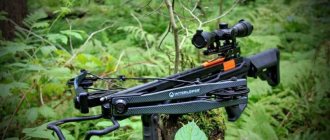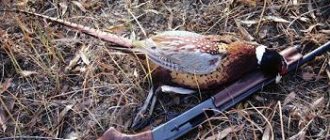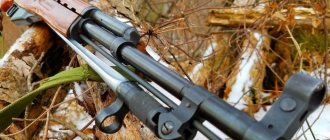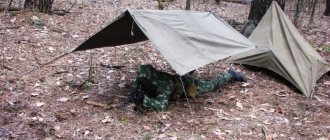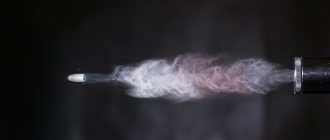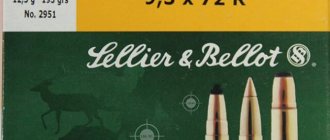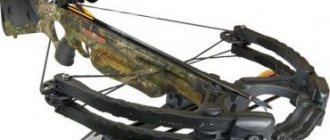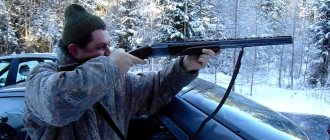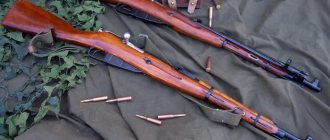For a hunter with a crossbow, the main type of prey is wild boar. In Russia, deer, which are popular in America, are not particularly common. Although they are also hunted. Before starting the review, all hunters should be reminded that in Russia hunting with a crossbow is prohibited, both for wild boar and other animals. But in many countries such hunting is permitted by law. Therefore, it is interesting to learn about the features of hunting a wild boar with a crossbow, its features.
Reason for crossbow ban
In our country, wild boar hunting with a crossbow is prohibited for the following reasons:
- The crossbow is a highly lethal weapon.
- There are no loud shots from the crossbow, which makes it possible to consider it a weapon with a silencer, which is prohibited in our country.
- A crossbow is a throwing weapon.
If you are a wild boar hunting enthusiast with a crossbow, visit one of the following countries:
- Finland. It legalizes hunting with a crossbow. But such events are specially organized, so you need to find such companies.
- Belarus. These types of hunts are also organized in this country.
Clothing and disguise
The shooter must carefully prepare for hunting, paying great attention to clothing and camouflage. It is advisable that the clothes be loose, made of soft fabric and should not rustle under any circumstances. In most cases, the wild boar comes out with the onset of darkness, with which comes coolness, so do not forget about maintaining heat during long, motionless waits. A hunter must have patience and endurance.
The colors of the camouflage suit must match the terrain in which the hunt will take place. Don't forget about your face, which will stand out as a bright spot against the background of a dark forest. To camouflage your face and hands, you can use special camouflage mastic (combat makeup). You can also use a mosquito net for this, in the form of a bandage, covering the lower part of the face, which conceals its contours. If there is neither one nor the other, the face can be darkened using ash from a fire or coal.
Most hunting takes place over short distances, when the boar comes close to the hunter, the smell emanating from the person can scare him away. After washing, clothes must be ventilated and transported to the hunting site in a separate bag or backpack; there should be no question of smoking at all.
Advantages of hunting wild boar with a crossbow
Considering the results of hunting in other countries, we can highlight several advantages of such hunting:
- New sensations during hunting that are not available when hunting with a gun.
- The design of the crossbow is simple and the operation is reliable. Hunters know how much trouble it is to carry a gun in the forest. It must be protected from moisture and dirt. The crossbow is significantly superior in this regard and does not require special care.
- High probability of obtaining prey from the beast. The crossbow is a silent weapon. The arrow speed reaches 100 meters per second, the arrow weight is from 22 to 27 g.
- There is a small “price” of an inaccurate shot, unlike a rifle shot, since the boar may not hear the fallen arrow and will not attack the hunter.
- Weapon cost. A crossbow can be bought inexpensively, since its different types vary greatly in price.
What is the real accuracy of a crossbow?
The spring hunt will begin very soon. This time, two crossbow shooting enthusiasts decided to test its accuracy in order to dispel all the myths around this topic.
They took the best crossbow, which, according to many experts, is considered the leader in this group of weapons. They decided to shoot at a distance of 30 meters.
Each of the hunters had 15 shots in total. First, the arrows were fired from a machine where the crossbow was well secured, and then from a small bag to minimize human influence.
The shooting results showed that the accuracy of the crossbow was five centimeters, although when shooting with the same arrow, accuracy could be achieved twice as good.
Disadvantages of a crossbow
What are the negative factors of hunting wild boar with a crossbow, say the following facts:
- It is difficult to shoot at a moving target from a long distance, while adjusting for lead. You won't be able to shoot accurately with moving objects. This weapon is good for stationary targets.
- Silent shots are an inhumane treatment of the animal. The hunter will not go to finish off a wounded animal with the final shot, but will wait for another animal in ambush.
- Weapons are prohibited in Russia - not every hunter can afford to go abroad to shoot.
- If you own a crossbow, do not try to obtain a permit or license to take wild animals, including wild boar.
- It takes a lot of dexterity and skill to make accurate shots. Shooting accurately from 40 meters requires more skill than a shotgun.
Comments
- Artem 04/16/2018 at 12:28 It’s better to shoot wild cans and canisters at the dacha first.
A crossbow is not a gun; it takes a long time to reload, and even in conditions of time pressure and adrenaline, when your hands are shaking and an angry beast is rushing at you. The chance to take a second shot is not always given. And as the author of the post correctly said, skills and the right bolt are better than the most powerful shoulders. Answer - Punisher 04/01/2020 at 12:46
You freaks, HUNTERS, killersAnswer
Add a comment
latest comments
Alexey: How can I order?...
Vladimir: The material is outdated and requires correction on two points: - described ...
Mikhail: Is it possible to make a module for Muscovite heels? How much will it cost …
Gennady: One person did something and everyone else should be responsible for it...
: If he opened fire within the city, then this is not a hunter, but a idiot...
Anatoly: In the requirements for documents for renewal, replace the psychologist with a psychologist...
YuryY: Having shot 1 can of gunpowder, Bars was very pleased with it, the factory weighed it...
Acorn: You understand so much...
: Vile degenerates! Bastard hunters, cowards, shoot yourself and that’s it...
Alexander: 35g, it’s simply impossible to stuff it into a pistol cartridge. People, for example...
Vladimtr: No, it’s not a typo, it says 35 g of Gunpowder per bullet weighing 7.45 g of gunpowder...
Evgeniy: It’s not clear. But for a state fee of 650 rubles, can I buy pheasant and...
Survey
Types of crossbows
There are two basic types of crossbow:
- Classic view (recursive). This is a light, reliable and simple weapon, weighing no more than 2 kg. It is optimally suited for long-term hunting trips.
- Blocky view. Their mass is greater and reaches 3.5 kg. Such a crossbow for long hikes is a big drawback. But at the same time you will have a powerful weapon in your hands.
In order for a crossbow to have sufficient power to catch a wild boar, it must have a draw force of over 80 kg. Experts recommend looking at models with dry-shot protection and a fuse. If a dry shot occurs without an arrow, the weapon will suffer serious damage.
Necessary equipment
First of all, the hunter will need the crossbow itself. For dynamic, mobile hunting, it is better to select lightweight models with the ability to be suspended for a long time. In this case, the accuracy of the shot will significantly increase. But often one weapon is not enough and hunters resort to additional devices.
The main assistant in this matter seems to be the sight. Installing a sight will allow you to better determine the ballistic characteristics of the ammunition used and adjust the shot. For hunting, four-fold optics such as 4x24 or 4x32 are sufficient. A collimator sight will help you fish in the dark, shooting at moving objects.
The effectiveness of the hit depends on the arrow used. There are many varieties of ammunition with different tips for improved aerodynamic characteristics and deeper penetration into the target.
The weight of the arrow is also selected for each animal individually. Heavy shells are suitable for elk, wild boar and similar large game. Lightweight aluminum arrows are used for ducks, geese or beavers.
Crossbows require less maintenance than shotguns, but it is not recommended to completely forget about tool maintenance. Regular lubrication of the bowstring, coupled with general cleaning of the device, will significantly extend its service life and also maintain accuracy.
In addition to the main components, the crossbow can also be equipped with a silencer, tracers and other attachments that make fishing much more interesting.
Aim
The crossbow has a standard, high-quality scope for boar hunting. If you want to replace the scope, know that you do not need to install a scope with multiple magnification. The hunt will be carried out at a short distance from the animal. The best option would be a 4 x 32 or 4 x 24 sight. If finances allow, then pay attention to a night sight. Large boar can be caught at night. There is a special type of sight - a collimator sight. It makes it possible to shoot with greater accuracy.
You need to get used to the sight in advance, and not just during hunting. You need to train and place targets at a distance of 10 meters, then increase the distance.
Arrowheads and arrows
When considering the features and secrets of wild boar hunting with a crossbow, you need to know that you should not skimp on consumables. Poor quality arrowheads and arrows can cause inaccurate shots. As a result, the animal will be injured. Experienced hunters advise buying several types of arrowheads and arrows, testing them in different weather and wind conditions, and choosing the best option.
There are already time-tested products for hunting:
- For large animals, tips with two Carbon Express blades are better suited, which allow you to shoot right through the animal’s carcass.
- If the hunt is for a small animal, then arrows with drop-down blades are a good option. They open when contact with an obstacle occurs.
- The best arrows should be made from carbon fiber as it is a strong and reliable material. Many American manufacturers use it for their products.
- Arrows must be equipped with a tracer shank, which helps locate the expensive arrow.
Specifics of the fishery
Hota with a crossbow follows approximately the same rules as classic fishing with a gun. It is important to know in advance the vulnerabilities of each animal. The most effective shots are always those in the heart or lungs. If the arrow hits the shoulder blade or leg, it will be almost impossible to catch up with the wounded animal.
The lack of noise allows for some advantage. If you hit one individual from the flock, there is no panic. There is often a chance for a second shot.
Using a crossbow also poses some dangers for the hunter. First of all, it is important to keep your fingers out of the way of the bowstring release. Otherwise, you can easily lose them. You should also pay attention to the sides of the weapon and do not allow them to come into contact with tree branches. It would be a good idea to carefully inspect the bowstring before starting fishing. The presence of even minimal nicks or cracks can cause a break at the most important moment.
Who should not be killed with a crossbow
There are rules that state who cannot be shot at and made prey:
- You cannot shoot a female boar with piglets. As an exception, you can shoot sick piglets, as well as breeds crossed with domestic pigs. Such points are discussed with the huntsman, but the hunter must know this himself.
- An adult boar with large tusks, it looks like a rhinoceros, weighs about 250 kg. By the time the hunt begins, a wild boar will already have a “kalkan”. This is a thick “armor” that consists of connective tissue, as well as a strong wool tangle for winter. This protection is located on the chest and neck. It can even protect against a bullet, and a wounded wild pig becomes ferocious. But it is recommended to avoid the cleaver due to the fact that it is a producer of offspring, and not just out of fear.
Who can you hunt?
Hunting with a crossbow is carried out for deer, wild boar, and elk. But it was wild pigs that became the most popular prey. You can shoot from them:
- Old boars that are no longer involved in the production of offspring. Their goal in life is to show their strength in front of the young pigs.
- A youngster is a young pig about a year old. It is the best tasting meat, which has great nutritional value. The animal is long-legged, lean, without a hump or visible signs of sex. Weight can reach 40 kg. This is a boar with light hair, and not a suckling pig. Usually male piglets are chosen for shooting.
- Gilts up to two years of age. In appearance, it looks more serious than the yearling. He has visible withers, a lot of stubble, and weighs up to 70 kg. But the difference between a boar and a pig is small.
How to hunt wild boar with a crossbow
With such a weapon it is better to hunt through static hunting. In this case, the help of dogs is also not needed. There is a high probability that a dog rushing towards the animal may fall under an arrow. Therefore, wild boar is hunted with a crossbow from a mobile storehouse, ambush, or a tower. Before shooting, it is better to test your strength and practice on large targets. Moreover, such targets should resemble the outline of a wild boar. The last training session must be carried out with this target on the tower. Before starting a hunt, the crossbow must be sighted at different distances in advance.
You can start hunting when the accuracy of shots from a storage shed or tower from different distances is 90% of the total. Your training should be supervised by an experienced huntsman, since mistakes and flaws can be seen from the outside. The hunt begins with the correct location on the tower near the feeding area. First you need to load the crossbow and place what you need nearby. Then you need to wait for prey. There is no need to smoke, drink, eat or make noise. It is better to start hunting in the evening, so you can wait for prey until the morning.
First, boars with piglets appear, then cleavers. You need to discuss with the huntsman who to shoot. Take aim at the beast and control its movement. The shot should take place in a position that is comfortable for you - the desired distance in profile towards you. Reviews from hunters with the Cheetah crossbow say that the most convenient place is in large lungs with thick vessels. To accurately fire a crossbow shot into the liver or heart, you need to be talented. The spine, neck, head are not for you. This will only bring torture to the beast. There is no need to immediately approach the animal after shooting. Even a mortally wounded boar may still try to escape into the forest. We need to wait until it settles down and calms down.
Shot at a huge bear from a storage shed
The events take place right in the forest on a tree, where two people are sitting and waiting for the bear to approach the bait site. The hunter first pulls the bowstring on his crossbow, and then sits down in the storage shed to wait for the beast.
Below on the ground there is a special bait for a bear right in a barrel, which is attached with a chain to a tree so that it cannot be dragged away.
Soon a bear appears and begins to feast on the bait, but is chased away by a larger individual. It is this bear that the hunter decides to shoot.
The arrow pierces the animal's carcass instantly, and it rushes to run into the depths of the forest. After some time, he is found very close to the place of the shot.
What to do after a shot
The most successful option is for the arrow to pierce through the animal’s carcass. This can be seen using a tracer shank. A light enters the side of the boar, fades for a moment, then lights up again on the side. The behavior of the boar also indicates a successful hit: it falls to its knees, either spins in place or falls on its side. Such a boar will not run far. You must not descend from the tower until an experienced huntsman arrives. Explain to him what you saw, and then go to the wounded animal. Large pools of blood with bubbles, parts of damaged organs also indicate a successful shot. At the same time, the wild boar can be easily detected even in the dark.
If there are no blood stains, and the boar's tracks can be traced along a straight path, then you missed. It’s even worse if the arrow breaks, there is little blood, and the boar runs straight. A wounded animal must be searched through forest hunting grounds with the help of huntsman's dogs. However, such searches are not always crowned with success. In Russia, wild boar hunting with a crossbow is not available and is expensive in other countries. This type of hunting has its own characteristics and requires good preparation and sufficient experience.
arbalet-airgun
Wild boar is the main type of prey for a crossbowman who decides to engage in animal hunting. All kinds of deer, popular on the American continent, are not so common here, although they can also become quite legal prey (see “Hunting with a bow and crossbow - is it possible or not?”).
The article “Crossbow for game hunting” was devoted to the choice of weapons for large animals; now it’s up to its use. I would like to emphasize that this description is nothing more than a diagram of some ideal hunt for a beginner. Reality may differ radically from it, both for the better and for the worse. Let's literally briefly consider purely biological issues - you can read them in detail in any article about wild boars - let's focus on the wild pig exclusively as an object of hunting.
Who should you not shoot at?
First, about those whom we will not shoot arrows at under any circumstances.
First of all, this is a female with piglets.
Comments seem to be unnecessary. However, the widespread belief that females and piglets are not shot at all is also erroneous. And there is an overabundance of pigs on the land, and there are defective piglets. As a rule, crossbreeds with domestic pigs are culled, which does not happen very rarely (pictured).
The modern domestic sow hare is essentially an unfortunate creature, something like a bodybuilder abusing steroids - an artificially created biomass on legs, due to the lack of immunity, living on antibiotic injections. To prevent such a monstrously mutated genotype from spreading throughout the forest wild boar population, selective shooting is carried out - when the piglets reach gastronomic standards, but before the onset of puberty.
In any case, the huntsman will clearly set priorities before the hunt: when, whom and how many.
The second taboo option is an adult wild boar, also known as a cleaver, or a wild boar, that is, a seasoned male with mature “cutting” fangs.
Weighing sometimes a quarter of a ton, the living tank is the northern analogue of the rhinoceros, whose poor eyesight, as we know, is absolutely not its problem. Moreover, just in time for the hunting season, the cleaver begins to acquire the so-called “kalkan” - completely impenetrable armor made of overgrown connective tissue in the neck and chest, complemented by a solid frozen wool tangle for winter. Kalkan, as luck would have it, covers exactly the killing zone of the boar, and not even every bullet can take it.
Add to this the natural power of the beast: a high pain threshold, an exorbitant level of endurance and “vitality” in general. A huge elk lies down from a wound that will only enrage the boar. In ancient times, it was a manifestation of valor for any warrior to defeat one, naturally, from a horse and a heavy spear. And at the same time stay alive.
Even now, with the exception of trophy hunting, the cleaver is caught relatively rarely, and not at all because of fear of it, but because it is he who is the main producer of offspring. They shoot mostly shaggy monsters that have already lost their minds, who are interested not so much in females as in the opportunity to once again rip open the side of a relatively young opponent. As with all higher mammals, including primates, in the boar world everything is ruled exclusively by powerful male warriors.
Fortunately, seasoned loppers are extremely unsociable and visit their brethren clustered in herds only during the rutting season. In open spaces they also do not like to glow, except at night. It is at this time of day that the most experienced hunters (with powerful firearms and belaying comrades, of course) take the boar fattening in the fields from the approach. An arrow with almost no stopping effect would only become an additional irritant for him.
We will also not shoot at any moving boar. But more on this below, when we begin to consider hunting methods.
Who will we hunt?
So, relatively young individuals, usually male, remained as the main objects of crossbow hunting.
This prey is all the more attractive because the nutritional value of meat deteriorates with age, and the taste changes greatly. Moreover, the danger of trichinosis sharply increases - that nasty thing, very painful and difficult to treat. Moreover, the larvae can easily withstand any heat treatment.
From a gastronomic point of view, the best option is a youngster, that is, a piglet of the current year of birth and a little older.
You can see him right away - all so neat, orderly, still without a hump, but no longer a milky minke whale. With difficult to distinguish gender. They are slightly lighter in color than adults and more ankle-length. They weigh from 25 to about 40 kilograms.
The so-called gilts - boars one and a half to two years old - are much more respectable guys, weigh 60-70 kilograms and look the part. The withers are already visible, and real stubble is appearing.
At this age, it is still very easy to confuse a pig with a pig.
Over time, sexual dimorphism develops, and an adult boar is quite easy to distinguish from a female by its silhouette.
The cleaver, so to speak, has a much more developed shoulder girdle, and a much more massive head. Now attention: you have just passed a kind of test.
If you were touched by the above photographs and were offended by the text commenting on them, do not read further. And put aside the thought of hunting. There is a sea of its own specifics, which are not always understandable and pleasant for outsiders. You will only exhaust yourself and your first prey, which will most likely be your last. This concludes the short course in “wild boar studies” and moves on to the actual hunting. The first in our crossbowman career. Most likely, it will take place either in an enclosure or in the hunting grounds of the country where this is permitted. By the way, the so-called An “aviary” is by no means a pen for deer and wild boars, but full-fledged land, sometimes of a huge area, only with a different legal status. In them, animals are not the object of hunting, and therefore, methods of killing them are not regulated by hunting legislation.
Current insert.
No sooner had this article been published than the first comment appeared, roughly in the following vein: “The article is stupid - some additional shooting, connections with some huntsmen, hunter ethics and other crap. We need clear and precise instructions on how a tenth grader who bought a crossbow can go into the forest and kill a wild boar.”
Especially for my critic and his comrades in spirit: when it comes down to it, a successful poacher is the most experienced hunter. Or a fisherman. Or both at the same time. You cannot become one by reading articles or posts on thematic forums, without starting with the basics of practice, preferably by learning from someone more knowledgeable. It’s the same as building your life according to the precepts of the wonderful book “How to become a criminal “authority” in 10 lessons.” A manual for suckers."
Methods of hunting wild boar with a crossbow
Its main types are inaccessible to us due to the low speed of the arrow. It is impossible to calculate the lead when shooting at animals rushing past the shooter “at number” during a drive. Hunting with dogs is unsafe, first of all, for themselves, who are capable of instantly running under a seemingly leisurely projectile fired at a wild boar.
What remains is a static ambush hunt. Mainly from a tower, an outpost, a storage shed, including a mobile one - the so-called tristand.
And not only for the safety of the shooter. Over millions of years, wild boars, as well as bears, have developed the ability, which is extremely useful for hunters, not to pay attention to what is happening above their heads. And really, who would dare to jump from a branch onto their neck? Unless it's Rambo from First Blood.
Hence the first rule of preparing for crossbow hunting: do not get carried away with shooting at classic paper archery targets, spend more time on three-dimensional ones. And get acquainted with the information contained in the article “Where to shoot with a bow and crossbow?”.
3D targets allow you to completely simulate shooting at real animals from different angles, both horizontally and vertically. And it is quite different from a shot “on paper”.
Ideally, preparation for a hunt should look like this.
You are already confidently shooting at 3D targets depicting a wild boar at your dacha, both in profile, which is easier, and in “three-quarter” view (see “3D targets for bows and crossbows”). And yet, when going to a hunting area, take at least one of these with you. Having arrived at the place, go with the huntsman to the feeding area with a tower and from there measure the entire hunting area with a rangefinder using more or less noticeable landmarks. Then, by placing the target sequentially at all these landmarks, determine in practice what corrections you will have to make when shooting. Let me remind you that your crossbow should already be zeroed in advance at all distances divisible by 10 meters, starting from 20 and up to 50-60 meters (for details, see the article “Installing and zeroing an optical sight”).
It looks something like this:
You will notice how your aiming adjustments will change compared to how you are used to shooting horizontally. Therefore, it is highly desirable to organize training and entertainment shoot-outs not only on the lawn, but also, say, from the balcony of a country attic (which is unsafe) or in an abandoned quarry.
Consider yourself ready to hunt only when 90 percent of the arrows fired from the tower at different distances land in the killing zone of the target. A huntsman or an enclosure hunting farm worker will also carefully observe your actions and will definitely draw conclusions for himself. For example, about how likely it will be for a wounded man to come after you - of course, not free. And even about whether you should be allowed to hunt at all, even though you paid for it.
You will have to spend a fair amount one way or another. The cost of an enclosure hunt or a commercial voucher (which is basically the same thing) for a wild boar amounts to tens of thousands of rubles. Therefore, especially do not skimp on accessories.
Selection of arrows, tips and hunting accessories
Tips . Don't be tempted by cheap "tinny broadheads" like the OZ, focus on the famous ones or the "G5 Outdoor" (pictured "G5 Striker Magnum").
But be careful here too. In the bottom picture on the left is the original “G5 Montec CS”, on the right is a one-off Asian “copy” under the same name
This is by no means a disdain for oriental goods, miracles simply do not happen, and the difference in price by an order of magnitude did not arise by chance. For that matter, you know very well WHERE most complex technical products are now produced, regardless of brand, and China has now become a leading steelmaking power. We are talking about “nameless” products from equally faceless enterprises, or, even worse, about blatant counterfeit goods. The best cure for following the “cheap and cheerful” principle is to buy a normal tip and a consumer goods product, followed by an objective comparison of them in practice. After all, it’s not customary for us to learn from other people’s mistakes.
Extremely undesirable, but having a right to exist, a budget option is also possible. Below in the text is a link to an article about choosing arrows. It is discussed in sufficient detail.
For hunting large wild boars, you can use 2-bladed tips, with which the guarantee of penetration will be slightly higher, although blood loss from a non-through wound, on the contrary, is lower due to the reduced area of tissue damage.
Tips with blades that open upon contact with the body are preferable to use on other, not so “thick-skinned” ungulates, such as roe deer or other deer (see “Hunting with a crossbow for deer by stealth”). Maybe for a young piglet.
The approach to choosing arrows is similar: only time-tested, well-known models from leading manufacturers. As a rule, these are Easton and Carbon Express products. For example, “EASTON BloodLine carbon” - at 20″ or 22″, with a mass of 10.5 grains per inch. When paired with a 100 or 125 grain high quality point, this will be a very fast and accurate projectile.
The story with the tips repeats itself here. Yes, products from Southeast Asia are cheap, accessible and quite suitable for country house and entertaining shoots. But it is no coincidence that in sports it is customary to carefully weigh and evaluate even exclusive arrows by their “spine” before selection. According to these indicators, cheap shells, even from the same batch, differ greatly from each other, which means they fly differently. Imagine how this could end on a wild animal hunt. Plus, or rather, minus - possible flaws, such as oblique plumage or crooked threads for the tip. As an option, a thorough check of budget arrows upon purchase (again, not the cheapest in the range) up to weighing without tips on electronic scales you take with you. Read more in the article “Arrows for crossbows”.
I also strongly recommend purchasing and equipping your arrows with tracer shanks (“heels”).
Some craftsmen make them themselves, using chemiluminescent components or LEDs.
Read more about their use below, when we move on to hunting.
Remember that sighting should be carried out with the same arrows and tips with which you will hunt.
Range finder . Either a professional military man or a surveyor can do without it. For a slow crossbow arrow, not even every ten, but every five meters of distance matters. But this same property also gives us an unexpected plus: since we are talking about short distances and far from extreme hunting conditions, relatively cheap models are quite sufficient - there are some even in the region of 10 thousand rubles (pictured below).
For reference: a professional (and there are no others) 50-meter measuring tape will also cost a pretty penny.
Fortunately, most full-size hunting crossbows are already equipped with optical sights with the original reticle . According to their characteristics, they are quite suitable for our purposes. In a different situation, follow the advice on choosing a sight from the article “Sight for a crossbow“.
But you may need not just optics, but a night sight . Wild boars usually go out to feed at dusk, or even at night. With the exception of farms where hunting is relatively rare and the animals are not scared. And here the crossbow has a significant advantage not only in comparison with a bow, where you can’t stick a “night light”, but also with a firearm.
The fact is that due to virtually no recoil on a crossbow, you can use NVGs of the 1st generation, which cannot withstand a shot from a carbine, much less a gun. These cost several times less than devices of generation 2 and 2+, and with the 3rd they differ by an order of magnitude. These are, in particular, sights of the Vologda Optical-Mechanical Association (VOMZ), produced under the PNS brand (in the photo “PNS 2.5x50”). The brackets for them can be selected for any type of fastening.
Vologda residents also have NVDs of the conditional generation “1+” with a ceramic bulb (“PNS 3×50”). They are literally several thousand more expensive, but they are already resistant to serious recoil and work reliably at distances of 100 meters or more.
Read more about them in the article “PNS night sights produced by VOMZ“.
There is one nuance in the use of “night lights”. They are intended mainly for direct shooting distances from firearms (for rifles up to 150-200 meters) - it is night after all. That is, there is no time and no need to work particularly hard on introducing amendments. Therefore, the aiming reticle is simplified - “cross” or “pike”. Crossbows do not have a “direct shot” as such. This means that you will either have to choose a sight with a cross-shaped “mildot” reticle (VOMZ also has these), or shoot from a tower during the day, say, at 40 meters, and then wait until at night the hog approaches any landmark located at this distance.
Although using a simple “duplex” cross it is quite possible to zero in at least a couple of distances:
As for hunting using an under-barrel flashlight , it differs little from rifle hunting. Is it even more difficult, again due to the characteristics of the flight path of slow crossbow arrows. There is too little time for aiming from the flash to the scattering of the “targets” in different directions. Therefore, it is not entirely correct to recommend it to a beginner. Only regular training will help here.
So, we have almost completed all the preparatory activities. It's time to finally move on to the hunt itself.
Attention! If the article breaks off at this point, temporarily disable your ad blocker. Some of them manage to cut off the actual advertising screensavers along with the rest of the text. Moreover, they block the viewing of videos with stories about weapons, scenes of shooting or hunting.
Aim and shoot: secrets of wild boar hunting
In the evening, the huntsman will take you to the tower/storage area, where you will immediately arrange a connection. Now all that remains is to sit and wait, having everything you need at hand and loading the crossbow. At the same time, do not make noise, do not drink, do not smoke, and do not husk seeds. And so on for many hours - the herd may well show up in the morning.
Finally, first the piglets will begin to appear on the feeding area (they still don’t really know how to be afraid), then their older relatives. After some time, a relatively young cleaver may also approach, who will almost certainly disperse all the small things in order to dine alone. It all depends on the instructions given to you by the huntsman - who to shoot. Depending on this, you will select a target and track – through the sight – all its movements. When the hog is in the most favorable position for shooting (preferably in profile), at a clearly defined distance, carefully aim and press the trigger.
How and where to aim.
The aiming itself goes something like this:
in the photo - a distance of 20 meters...
...and now – 30 meters.
Attention: both pictures are just “approximate”, more suitable for the realities of firearms. Based on experience, I recommend moving the aiming point down, in this case (depending on the size of the animal) by ten centimeters - the arrow is not a bullet, the damage to the “liver” is insignificant, but there is less chance of hitting the shoulder blade, but at the same time the possibility of hitting the heart is higher. Something like this…
The killing of the animal occurs due to the cutting of blood vessels with the blades of the tip, which causes rapid blood loss.
With blood flows life. I have a suspicion that the animal often does not even understand what is happening to it, but simply runs away to the side and, feeling a sudden surge of drowsiness, lies down to rest.
This is if you don’t scare him, jumping out of cover with a triumphant cry. Then the animal “on adrenaline” is able to get away from the hunter for hundreds of meters, often to no avail.
We are not talking about a sniper shot into an artery. Apart from the heart and liver, which are very difficult to hit with a arrow thrower, the main target is the lungs (shown in blue in the picture). The organ is quite solid, paired, that is, located on both sides of the body, and also densely penetrated by a network of blood vessels.
Do not rely on pictures with kill zones for firearms. In most cases, even a successful shot from a crossbow, as some believe, “locally” - in the head or spine - will do little except torment the animal. Yes, an arrow is capable of crushing even large bones, but it still does not cause such destruction as a bullet, and the wild boar, as already mentioned, is a specific animal.
After the shot
Now about what will happen at the moment of the shot and after it.
During daylight hours everything is much simpler, so let’s consider a more complex night option.
It's great if you followed the advice and purchased tracer shanks. Even during the day they will help to better track the flight path of the arrow, and even more so at night.
This will allow you to instantly determine the quality of shooting. Now the flying light entered the side of the animal, approximately where you were aiming, then disappeared for a moment and lit up again, freezing in motionlessness. This means that the arrow pierced the animal right through and stuck into the ground. When hit “on the spot,” this guarantees an excellent result; with such a wound the animal will not go far. And it will be much easier to find the arrow.
Now is the time to contact the huntsman - you will remain on the tower until he arrives. Then briefly tell him about what you saw, especially if the animal did not lie down in place or within the area, but went into the thicket. A successful hit will be indicated by the behavior of the prey: a boar spinning in place, falling to the side or falling to its knees; if it then leaves, it is clearly not far away.
Now you should inspect the “scene of the incident” with a powerful flashlight. First of all, you are interested in blood and traces.
The abundance of spots and color, torn out pieces of the heart or liver, the presence of air bubbles in the blood remaining on the arrow indicate an accurate shot. In principle, the animal has already “reached” somewhere nearby, and it is not difficult to find it even at night.
The complete absence of spots and the straight running of the animal is most likely a miss. It's annoying, but not scary, it happens to everyone.
The worst option is a wounded animal: there is blood, but not much, a broken arrow is lying nearby, clearly not going through, clear tracks lead in a straight line into the forest. This means that a mandatory search and selection of the wounded animal will follow. But already in the morning and, as a rule, with dogs. It is not always possible to find, and this is perhaps the main “jamb” for any hunter, which you will remember all your life.
Of course, there are still a lot of nuances of crossbow hunting for wild boar, which there is simply no way to talk about in one article. And it’s not for nothing that they say that it’s better to see once than to hear a hundred times... or read. Here is a fairly recent video of such a hunt (season 2015-2016) with the MK-XB52 crossbow.
